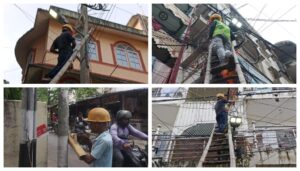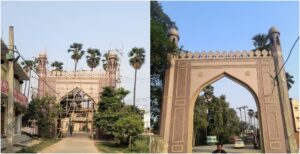Dengue Outbreak in Bihar: 56 New Cases in 24 Hours, Patna Becomes Epicenter

Patna: The dengue outbreak in Bihar continues to worsen, with 56 new cases reported in the last 24 hours, including 36 from Patna alone. One death has also been confirmed — Krishna Lal, a resident of Madhubani, succumbed to the virus while receiving treatment at Patna Medical College and Hospital (PMCH). Admitted on September 1, Lal was already in critical condition due to a severely low platelet count, according to medical reports.
Kankarbagh, a densely populated area of Patna, has emerged as a hotspot for dengue, with cases rising despite recent preventive measures. The lack of adequate fogging and anti-larva spraying is being blamed for the worsening situation. Just a week ago, another dengue-related death occurred in the area.
Local residents expressed concern over the negligence, saying, “Anti-larva spraying is not being done, and fogging is minimal.” Another resident, Sushant Kumar Singh, also criticized the poor sanitation, highlighting that even basic cleanliness has been ignored in the colony, the largest in Asia. “Water stagnation is common after rains, and it’s fueling the dengue crisis,” added Sanjay Prasad, another Kankarbagh resident.
In the past week, 280 dengue cases have been reported across Bihar, 148 of which are from Patna alone. This season, Bihar has recorded a total of 826 cases, with 421 in Patna. Despite the rising numbers, fogging and anti-larval measures have been inconsistent, leaving residents fearful of further outbreaks.
The Patna Municipal Corporation (PMC) claims it is taking necessary steps to curb the spread of dengue. A total of 375 teams have been deployed for fogging and anti-larval spraying, covering 50 houses daily. Special measures have been implemented within a 500-meter radius of affected areas. A special team has also been formed to monitor high-risk zones like Kankarbagh and Azimabad, ensuring that there is no negligence in preventive actions.
Municipal Commissioner Animesh Parashar stated, “A team of 375 people has been formed for anti-larva spraying. We are sanitizing areas where cases have been reported, and there is a separate team for hospitals. People from other districts are also coming to Patna for treatment, making the situation more challenging. Public awareness campaigns are also underway to prevent water stagnation in homes.”
A 25-member team has been deployed to monitor major hospitals, including PMCH, NMCH, AIIMS, IGIMS, Gardiner, and Rajvanshi Nagar.
Currently, 23 patients are admitted to hospitals in Patna, including 12 at NMCH and one at PMCH. Ten others are being treated in private hospitals across the city.
Dr. Ajay Kumar Sinha, a professor at NMCH, explained that severe dengue patients often exhibit symptoms such as extreme weakness, excessive vomiting, and red rashes. A critical drop in platelet levels usually occurs 3-4 days after fever subsides. Dr. Sinha advised patients to continue monitoring platelet counts even after the fever breaks. He reassured the public, stating, “There’s no need to panic unless symptoms like rashes or excessive weakness appear.”
Dr. SP Rana Singh emphasized the importance of prevention, particularly in households. “Do not allow water to stagnate in coolers and pots. Make children wear full-sleeved clothes and drink plenty of water to stay hydrated.”
Residents can request anti-larva spraying through a toll-free helpline number: 155304. The PMC’s teams are focusing on public areas, markets, and residential zones, addressing complaints from affected regions.





